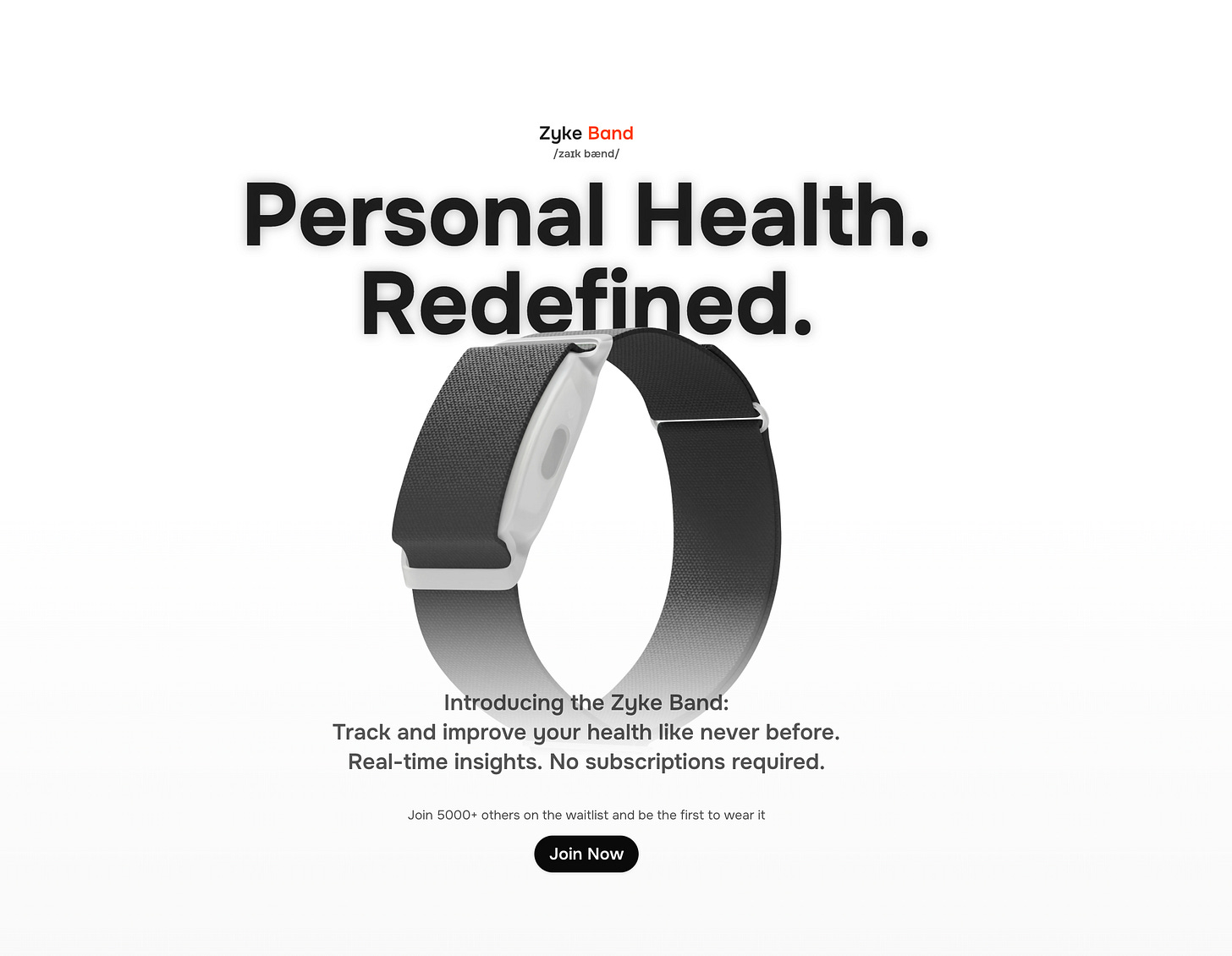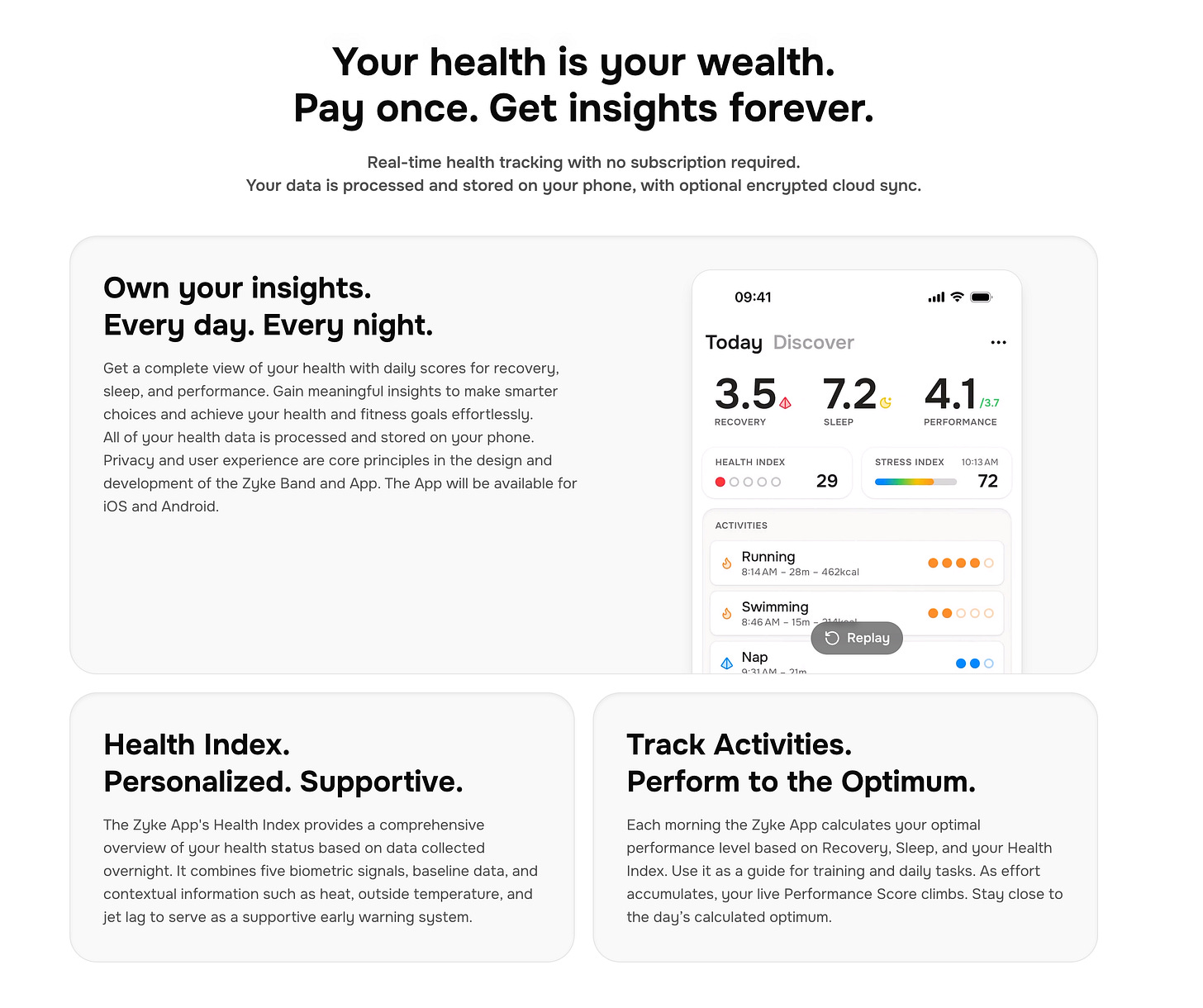Zyke Band: The Whoop Alternative Without Subscription
"Happy Bootstrapping" Volume #30
Phil Schaffarczyk was frustrated: €264 per year for his Whoop tracker, and they wanted another €89 for the upgrade. So the 28-year-old is now developing his own alternative the Zyke Band – no subscription, local data storage, and a one-time payment of €99. 5,100 people are already waiting for it.
This is a summary of Episode 142 of the “Happy Bootstrapping” Podcast (German).
The Trigger: “There Must Be an Option Without a Subscription”
After a few months with the Whoop tracker, Phil started researching.
“I ordered many from Alibaba. Eight or nine of these devices. Tested them all. They were all garbage.”
His analysis: The technology is relatively rudimentary, photoplethysmography has been in the mass market for over ten years. So he started differently – with a product designer, renderings, and a landing page. Without developing a single piece of hardware.
“I had 1,000 people on the waitlist relatively quickly,” Phil recalls. “I think I wrote maybe four or five comments in 20 Reddit threads.” Today it’s 5,100 unique addresses – with minimal marketing.
The Business Model: Hardware Without Cloud Dependency
The Zyke Band tracks:
Heart rate and heart rate variability
Blood oxygen saturation
Skin temperature and ambient temperature
Breathing rate
Sleep phases (via machine learning)
7-10 days battery life
The crucial difference: “All data is local,” Phil emphasizes. No subscription, no cloud requirement. Anyone who wants to export their SQLite database can do so. Encrypted backups are optional.
Pricing model:
Pre-order: €99 (only for waitlist members)
Regular price: €179
One-time payment, no recurring costs
“Of course you calculate the selling price so that there’s a margin for app development, maintenance, further development,” Phil explains. Apple shows how it’s done – money through hardware sales instead of subscriptions.
The Development: From Reddit to Production
With €30,000 invested (plus unpaid personal time), Phil has been working full-time on the project since April:
Hardware developer from Ireland (via Upwork)
Machine learning freelancer for sleep tracking
5 iterations of ML models
Commercial datasets purchased
“With hardware, every event doesn’t mean you need a few hours to fix a bug,” says Phil. “These are often periods of one, two, three weeks that you lose.”
The components:
Nordic processor (ARM Cortex-M4, 64 MHz)
Sensors from AMS Osram (Austrian-German)
IMU from Bosch
Two PCBs (mainboard + LED/photodiodes)
The Timeline: Almost There
Status September 2025:
Final hardware boards ordered
Distribution company being founded
Pre-order planned for October
Delivery expected January 2026
“The original date for pre-orders was September 24th,” Phil admits. The company formation is taking longer than expected. “When I factor in tax number, VAT identification number...”
Phil’s goals are clear:
500 pre-orders (break-even for first production)
3,000-5,000 devices in the first year
Long-term 25,000-30,000 active users
Additional products: Body composition scale planned
“This is somewhat my counter-model to the pure subscription model,”
Phil says about his strategy. No server infrastructure also means no ongoing costs.
Check the Zyke Band Website for more information.
What I Learned as an Interviewer
I found Phil’s approach interesting – starting with renderings and a landing page first – classic lean startup in the hardware space.
His Reddit strategy (”I’m looking for a Whoop alternative”) shows how to reach the right target audience with minimal effort.
The transparency about margins is impressive: At €99 he’s barely covering production costs for 500 units. Only at €179 does he really make money. His statement “You don’t need pre-seed for hardware” challenges the usual VC logic – with €30,000 instead of a million. And that at 28 he’s already founding his second company, after starting at 17, shows real entrepreneurial spirit.
Happy Bootstrapping is a German podcast where I interview bootstrapped founders, indie hackers, and solopreneurs about their startup journeys.
Over the years, I’ve connected with many successful entrepreneurs who have built e-commerce shops, SaaS platforms, mobile apps, content businesses, or hybrid models.
Furthermore I am a bootstrapper myself and growing my DevOps-as-a-Sercice and Web Operations Company “We Manage”.




Delivery expected in January 2025? Is this a typo?